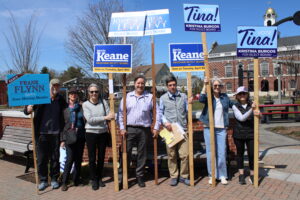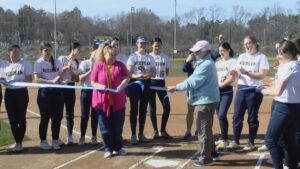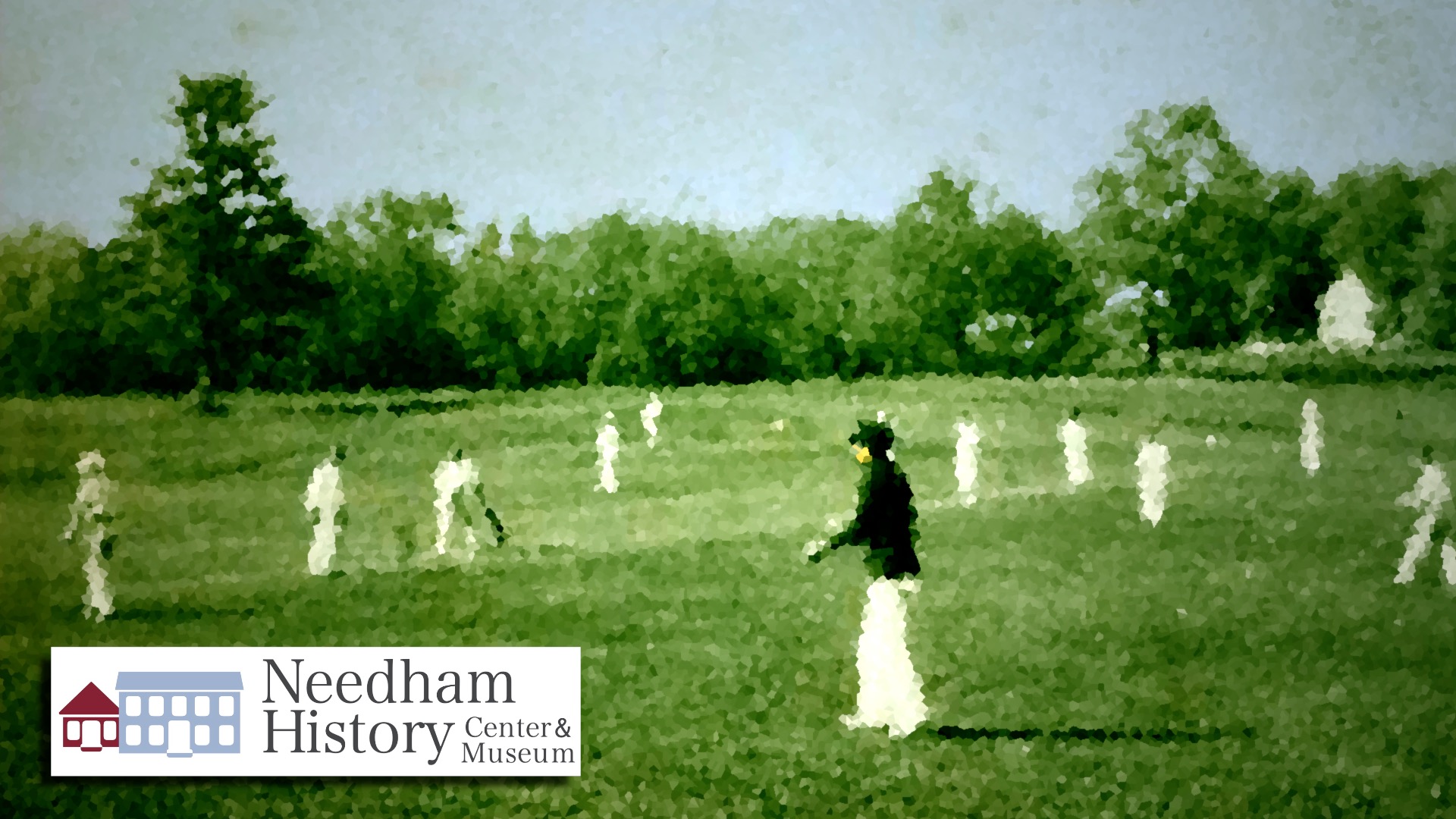
Needham History: The Boys of Summer…Needham Style
The Englishmen in the Heights stuck with their own national game.
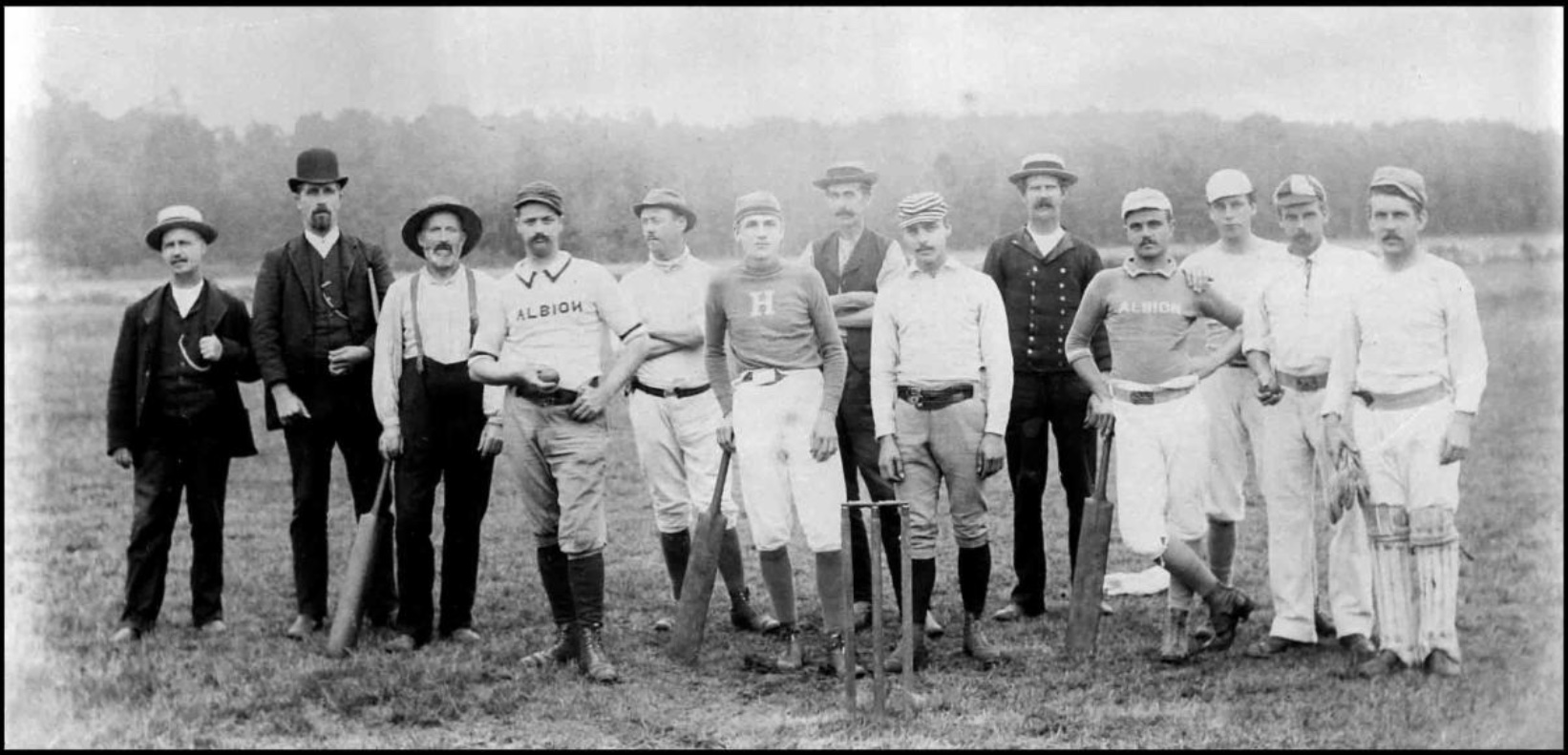
Needham’s Albion Cricket Club, one of the more successful of the town’s state-league teams, played (on and off) from 1867 to 1897. They even had two undefeated seasons. Several members had played team cricket in England before emigrating to the US.
The Boys of Summer … Needham Style
It’s a ritual of Spring – the crack of the bat, the slap of the ball into the glove… After a long cold winter, it is once again time for – Cricket!
While much of Needham played baseball, the National Pastime in Needham Heights from about 1860 until the 1920s or so was cricket. Starting in the 1850s, knitters from the English Midlands, displaced by the industrialization of the British textile industry, started arriving in Needham. Most settled in Needham Heights (then Highlandville), and in the years that followed, the Heights took on a distinctly English character when compared to the old Yankee ways of the Center.
So, while the Center played baseball, the newly-arrived Englishmen in the Heights stuck with their own national game. The knitting mills had house teams; the lodges, fraternal organizations, and neighborhoods all had teams. Needham even had several competitive state League teams. Cricket Field, on Hillside Avenue, was a pitch maintained by mill owners William Carter and Frank Gorse as a place for their workers and neighbors to play. There were also pitches near the corner of Webster Street and Homestead Park, and on what is now Avery Field.
Cricket has been played in England since at least the 1300s, and there are records of organized team play from the 1500s. Play is leisurely, to say the least. Furious bursts of activity are interspersed with long periods of inaction. Games can last for days. And the rules of cricket are bewilderingly complicated – not surprising for a game whose rules have been tweaked and revised for more than seven centuries. Take for example, Rule 36 (out of the 42 Official Rules):
Rule 36 (Leg Before Wicket) – Out LBW
The striker is out LBW in the circumstances set out below.
- The bowler delivers a ball, not being a No ball, AND
- the ball, if it is not intercepted full pitch, pitches in line between wicket and wicket or on the off side of the striker’s wicket, AND
- the ball not having previously touched his bat, the striker intercepts the ball, either full pitch or after pitching, with any part of his person, AND
- the point of impact, even if above the level of the bails EITHER
- is between wicket and wicket, OR
- is either between wicket and wicket or outside the line of the off stump, if the striker has made no genuine attempt to play the ball with his bat, AND
- but for the interception, the ball would have hit the wicket.
Got that? Good – there will be a quiz. And yes – my English friends do think that the rules of baseball are needlessly complicated. (I tried to teach them once; they thought I was making it up as I went along).
The Albion Cricket Club, one of the more successful of the town’s state-league teams, played (on and off) from 1867 to 1897. They even had two undefeated seasons. Several members had played team cricket in England before emigrating to the US. The mill- owning families were well-represented: the Gorse brothers were both players, and Frank Gorse was a respected bowler. William Henry Carter (son of William Carter) was an avid batsman, and appears in cricket team pictures for more than 30 years. All four Thorpe brothers were notable players, the more remarkable because one of them (Charles) was born with only one hand but was an impressive scorer nonetheless.
By the late 1930s, the neighborhood was no longer playing cricket, and Carter and Gorse gave the field to the town for recreation. Over the years, the field has been the site of various popular community games, most recently as a location for youth soccer. The game of Cricket has since receded so far from the town’s collective awareness that there are a significant number of people who think that Cricket Field is named after a bug. Jiminy Cricket Field, perhaps?
In 2011, as a part of the Tercentennial celebrations, Needham invited the Boston Gymkhana Cricket Club to return to Cricket Field to play an exhibition game. The game took place on a warm September afternoon, enjoyed by a cheerful, if somewhat puzzled, audience. Bill Littlefield, Needham resident and host of NPR’s Only A Game, reported on the game for his listeners.
Boston Gymkhana was only one of numerous cricket teams in MA. There is a passionate local cricket following, and an active league, the Massachusetts State Cricket League. So, on a fine summer day, take in a game for a (very) relaxing afternoon and a little glimpse of Needham history.
A rare glimpse of a game in progress on Cricket Field, circa 1900. Yes, they do seem to all be standing around.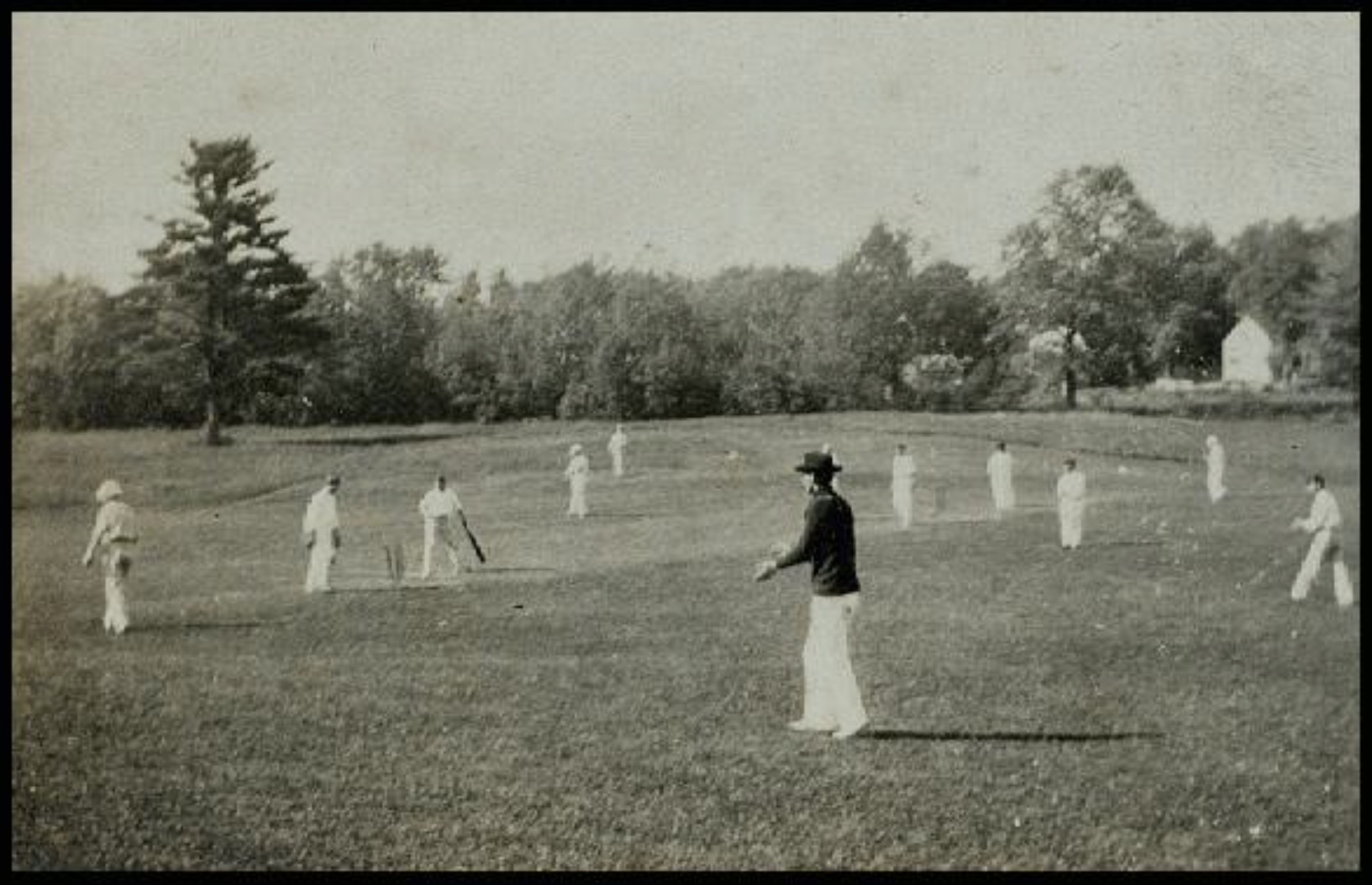
 |
Gloria Polizzotti Greis is the Executive Director of the Needham History Center & Museum. For more information, please see their website at www.needhamhistory.org. |
